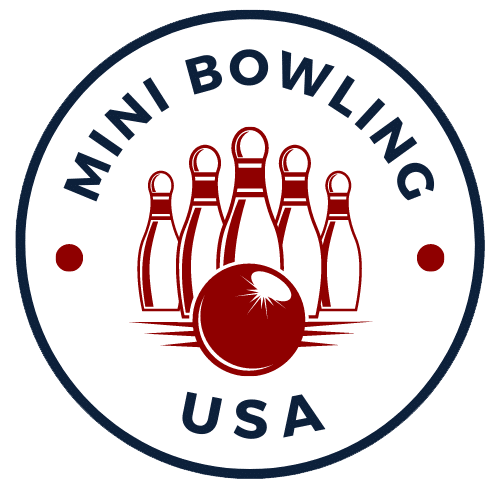What Makes Mini Bowling UNIQUE?
While both mini bowling and regular bowling share the core concept of rolling a ball to knock down pins, they differ in terms of equipment, lane size, scoring systems, and gameplay dynamics. Mini bowling’s compact nature and unique challenges make it an enjoyable alternative, particularly for venues with limited space or those seeking a more compact and social bowling experience.
Here’s a concise comparison of mini bowling and regular bowling:
Scoring and Gameplay
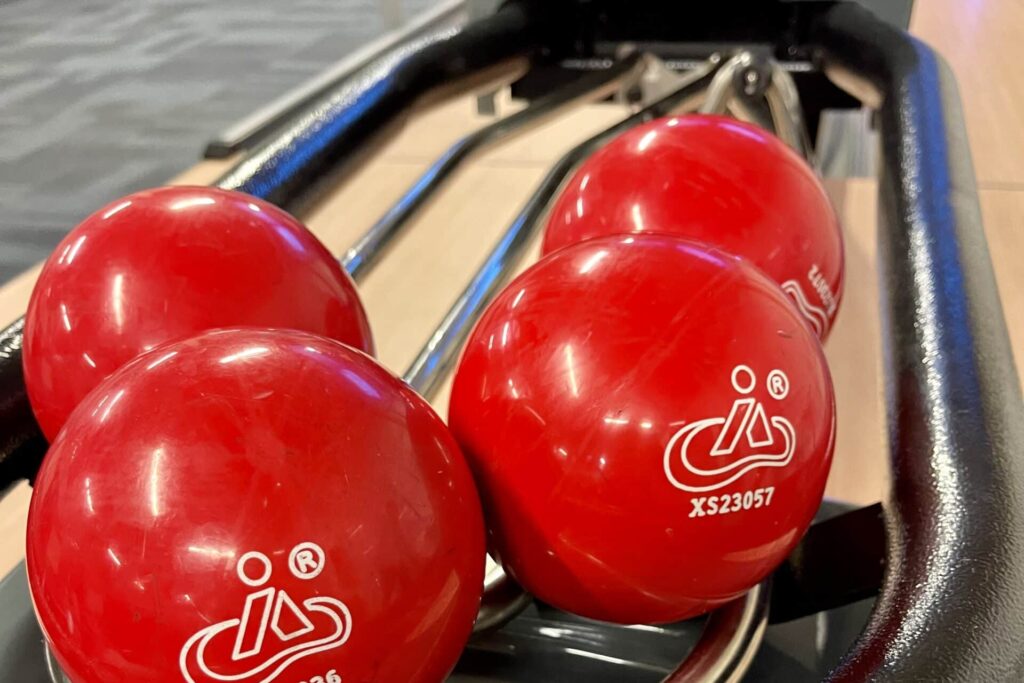
Mini Bowling
Mini bowling features smaller pins and shorter lanes. The pins are shorter, and the ball used is typically smaller and lighter, making it more challenging to achieve strikes and spares. Players get three rolls per frame to knock down as many pins as possible.
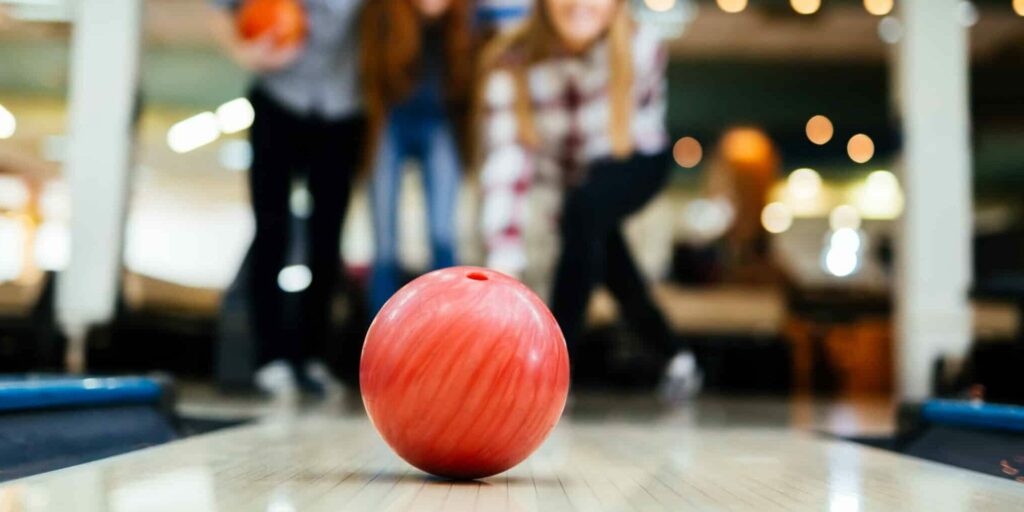
Regular Bowling
Regular bowling uses larger pins and a heavier ball. Players have two rolls per frame to knock down ten pins arranged in a triangle formation. Strikes, spares, and open frames contribute to the scoring system, where a perfect score is 300.
Lane Length and Size
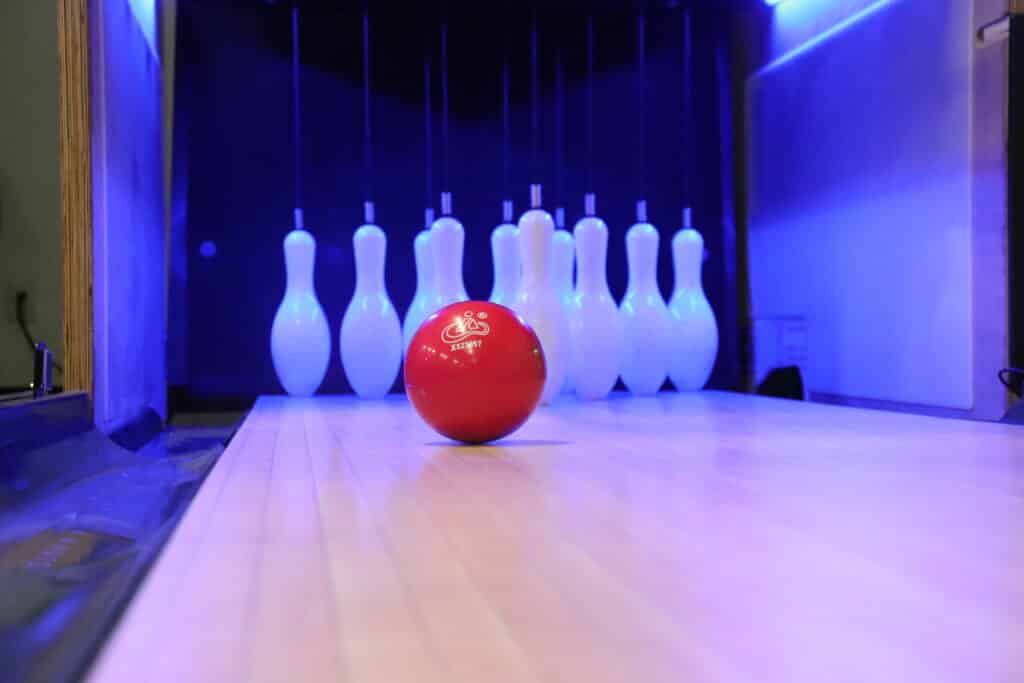
Mini Bowling
Mini bowling lanes are considerably shorter than regular bowling lanes, often around 35 to 45 feet in length. The smaller lane size makes the game more compact and suitable for venues with limited space.

Regular Bowling
Standard bowling lanes are around 60 feet in length. Due to the size, it makes it difficult to put a full-size lane anywhere that’s not a bowling alley or open-use space.
Pin Arrangement
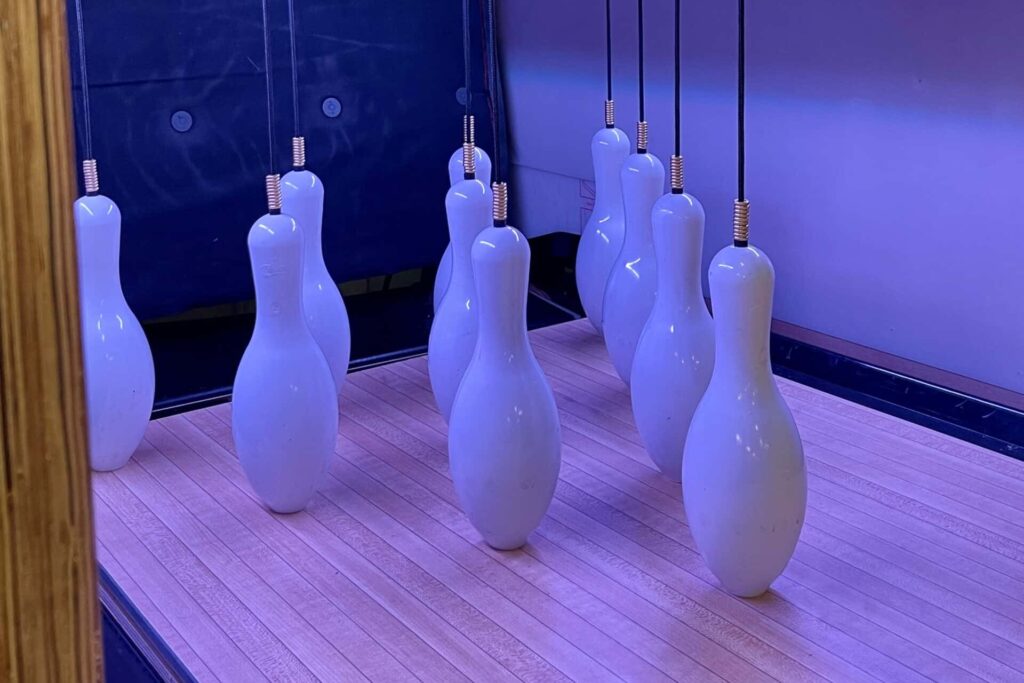
Mini Bowling
In mini bowling, the pins are arranged in a triangular formation similar to regular bowling, but due to the smaller size of the pins and ball, the dynamics of knocking them down are different
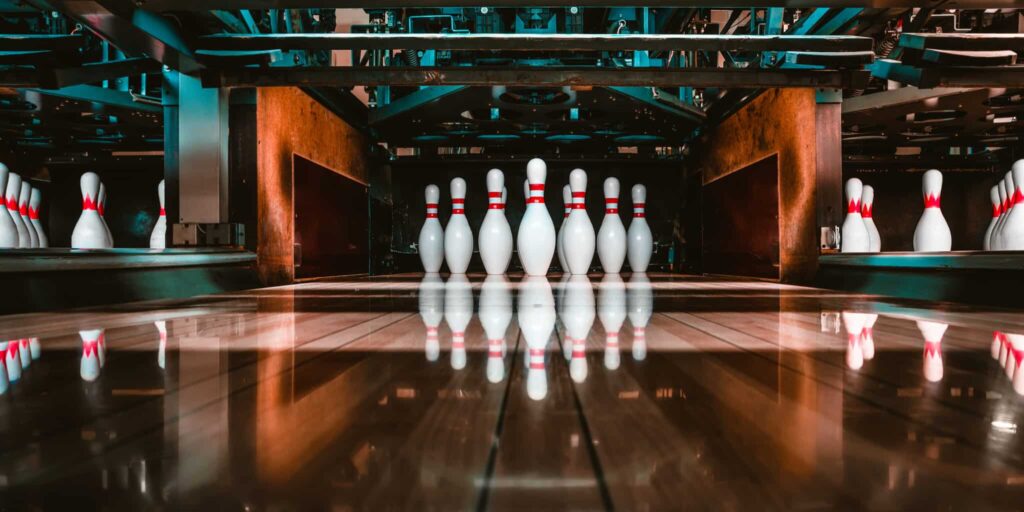
Regular Bowling
The ten pins in regular bowling are set up in a triangular formation, with the front pin at the apex. Knocking down all ten pins with a single roll constitutes a strike.
Equipment
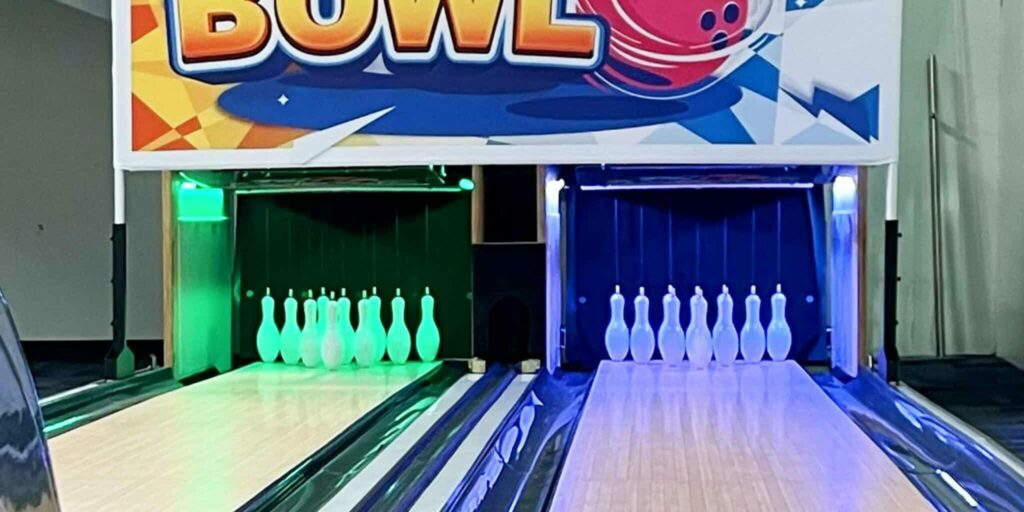
Mini Bowling
Mini bowling uses smaller pins, often called “duckpins,” and a ball that is about the size of a softball. Everyone uses the same balls eliminating the need for many weights and sizes of balls.
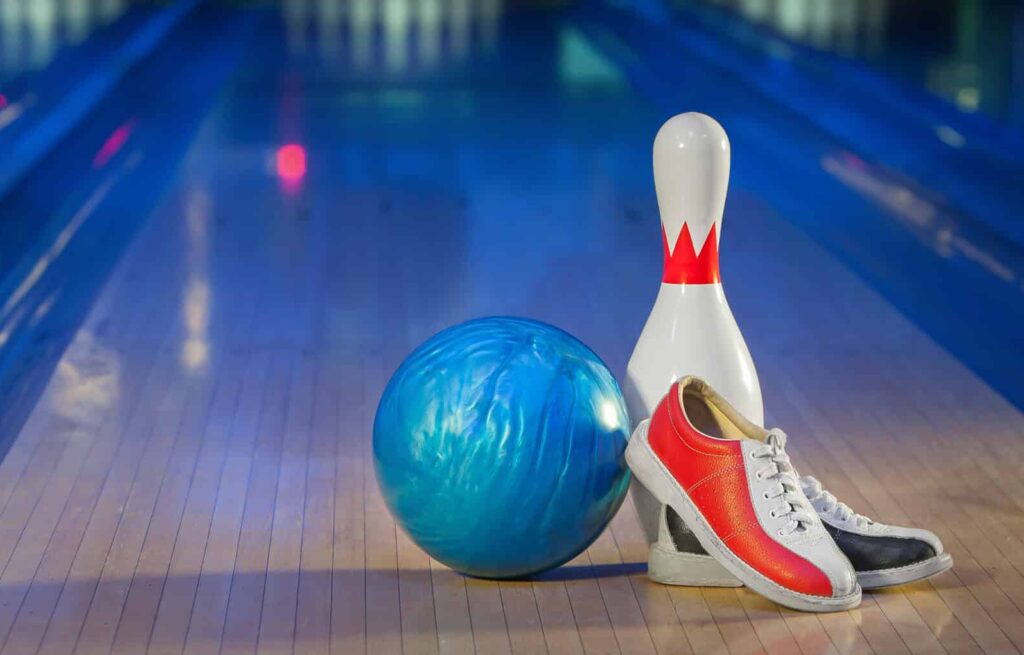
Regular Bowling
Regular bowling employs larger pins and a heavier ball, which allows for different strategies and techniques when aiming for strikes and spares.
Shoes

Mini Bowling
The design of mini bowling lanes and the nature of the gameplay allow players to enjoy the experience without the need for specialized footwear, enhancing the casual and social appeal of the activity.

Regular Bowling
Special shoes are required for regular bowling due to the unique characteristics of the bowling lanes and the gameplay dynamics.
The BOTTOM Line
While both mini bowling and regular bowling share the core concept of rolling a ball to knock down pins, they differ in terms of equipment, lane size, scoring systems, and gameplay dynamics. Mini bowling’s compact nature and unique challenges make it an very enjoyable choice, particularly for venues with limited space or those seeking a more compact and social bowling experience.
Want to know more? Contact us and we’d be happy to talk to you more about the ins-and-outs of Mini Bowling!
